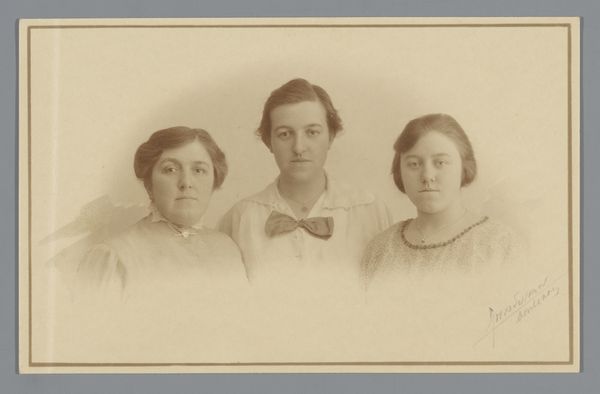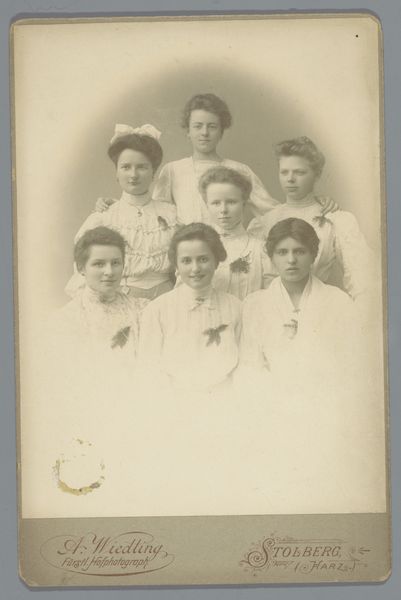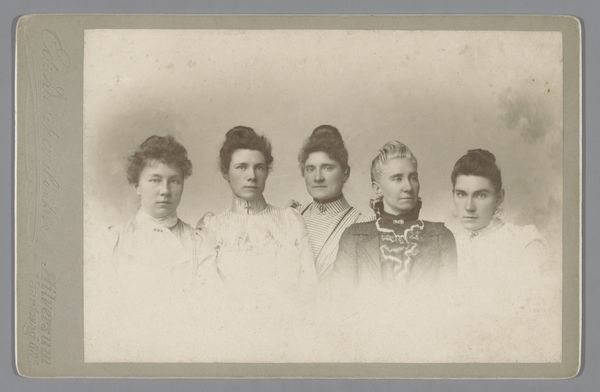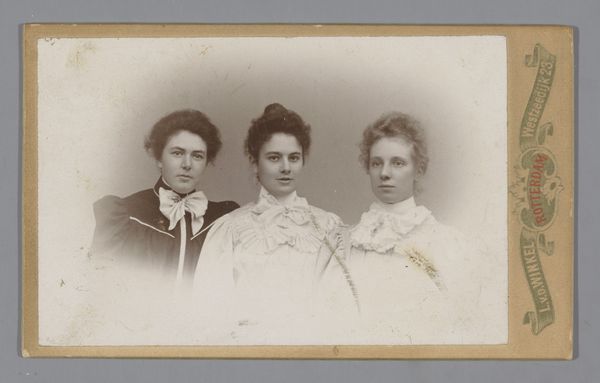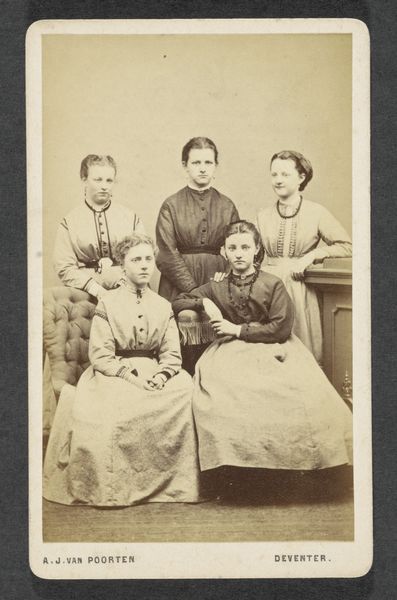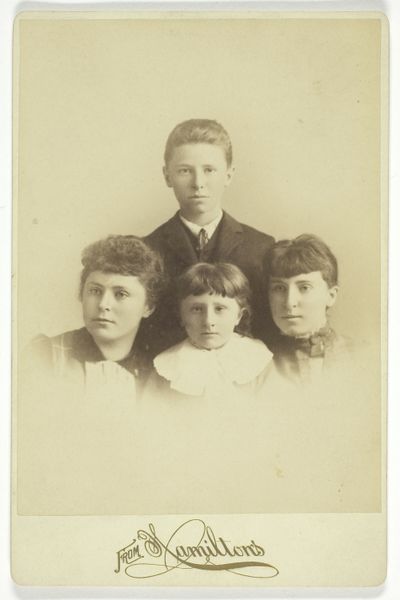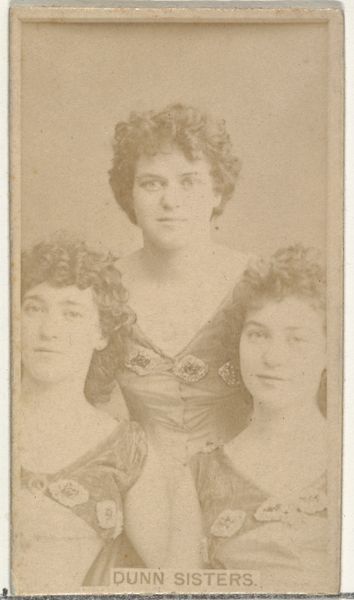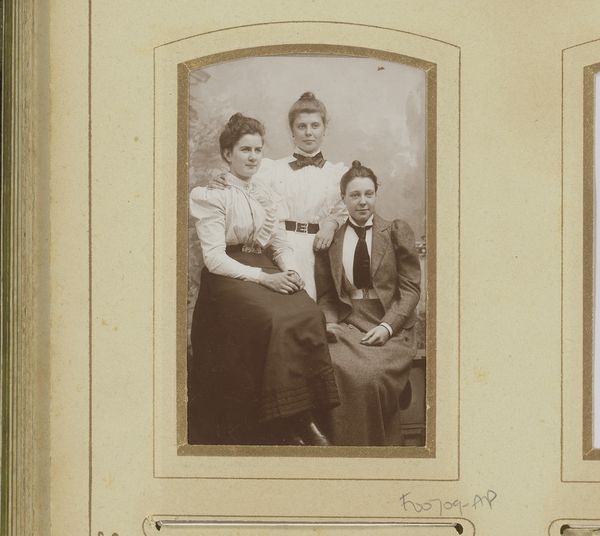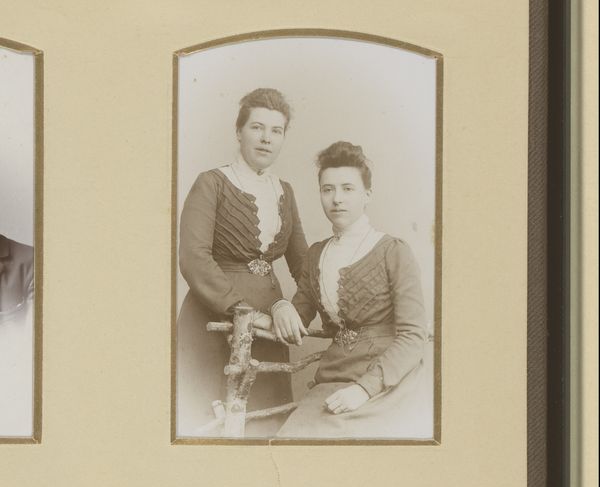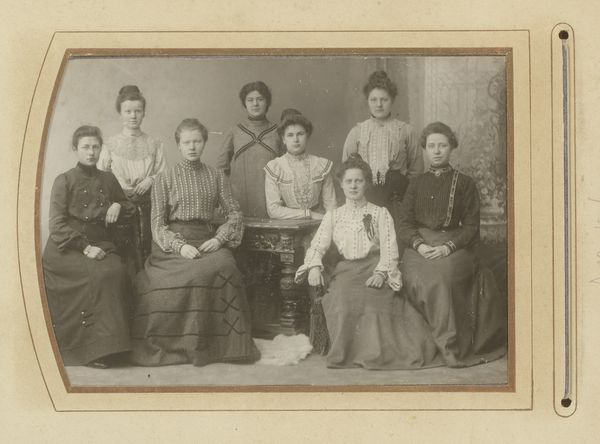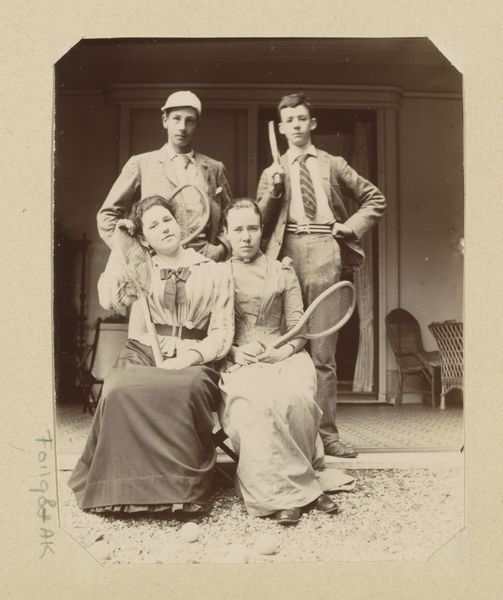
Groepsportret van vier onbekende meisjes, staand achter elkaar Possibly 1894 - 1899
0:00
0:00
photography, albumen-print
#
portrait
#
photography
#
group-portraits
#
19th century
#
watercolour illustration
#
albumen-print
Dimensions: height 112 mm, width 68 mm, depth 13 mm
Copyright: Rijks Museum: Open Domain
Curator: Looking at this display, we have "Groepsportret van vier onbekende meisjes, staand achter elkaar" or "Group Portrait of Four Unknown Girls, Standing Behind Each Other," possibly taken between 1894 and 1899 by Pieter Wilhelmus Roemer. It's an albumen print. Editor: There's a ghostly pallor to it. It feels almost spectral, as if these girls are peering out from some forgotten corner of the past. And look, it is fascinating to see them posed quite unnaturally on top of each other! Curator: Absolutely. In the late 19th century, such studio portraits were crucial for solidifying social identity and projecting respectability. Albumen prints, favored for their clarity and detail, involved a meticulous process, reflecting a significant investment of time and resources by the sitters and the photographer. The photograph wasn't a quick snapshot, but a carefully constructed statement. Editor: And you see that labor reflected not just in the production of the print but also in their presentation, in the clothes they have put on for this occasion. What do we make of the uniformity here? Each girl seems to be in almost identical dress: puffed sleeves, dark vests... it hints at a specific social context. It could even speak to how identity was consciously crafted through garments in that period. Curator: The almost identical garments indeed are really striking. These aren’t individualized expressions but point towards social belonging. Perhaps uniforms from a school, or some type of charitable institution? These garments really represent the visualization of their roles in the given social order. Editor: What interests me are these photographic cards that circulated, sometimes even worldwide. These photographic methods opened up all these new industries: of portrait studios and commercial darkrooms—entire support networks propped up around this specific technique. Curator: Exactly! We should remember these photographs are often far from spontaneous moments, these types of constructed poses and compositions reflect the desire of portraying some social value in particular and not documenting an everyday life reality. Editor: Reflecting on this, I am still moved by this slightly spooky staging; one can feel those historical processes layered one after another. Curator: A fascinating artifact, both aesthetically striking and immensely valuable for understanding the visual culture of the late 19th century.
Comments
No comments
Be the first to comment and join the conversation on the ultimate creative platform.
